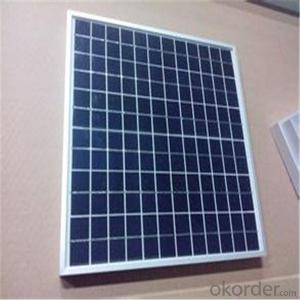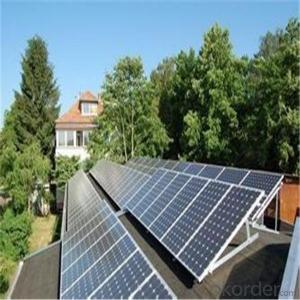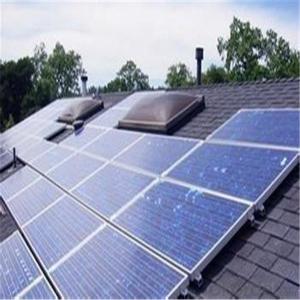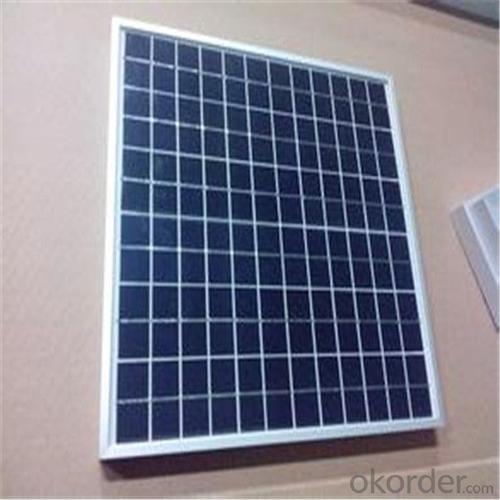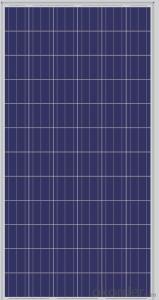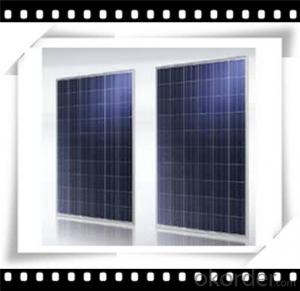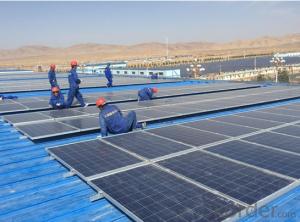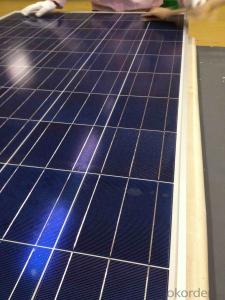280w High Efficiency Poly Solar Panel from CNBM - Solar Panels Boulder
- Loading Port:
- Shanghai
- Payment Terms:
- TT OR LC
- Min Order Qty:
- 1000 watt
- Supply Capability:
- 100000 watt/month
OKorder Service Pledge
OKorder Financial Service
You Might Also Like
Specification
Basic Info.
Model NO.: | GP-280P-72 | Material: | Polycrystalline Silicon |
Attribute (E. G.: Size): | Value (E. G.: 12 Inches) | Power: | 280W |
Export Markets: | Global | Trademark: | Gi-Power |
Packing: | Standard Export Packaging | Standard: | TUV; CE; ISO |
Origin: | Guangdong, China | HS Code: | 8541402000 |
Production Capacity: | 70mw/Year |
Product Description
280W/36V solar panel/module for solar power plant.
Quality Ensurance:
1. Excellent A Grade solar cell from Motech or Hanwha solar.
2. Excellent backsheet from SFC, 3M;
3. EVA from Bridgestone / First;
4. Junction box with UL and TUV listed - GZX, IP65;
5. High transmission low iron tempered glass from Xinyi Glass - China Top 1;
6. Solar panels with TUV, CE, ISO9001 certified.
Strong, lightweight aluminum frame design with reinforced sealing and load hold to prevent freezing and warping, and stand against high wind.
Under Standard Test Conditions(STC): Irradiance of 1000W/m2, Am1.5 and 25º C cell temperature
Operating Temperature: -40 ~ +85° C
Storage Temperature: -40 ~ +85° C
Mechanical Characteristics:
Dimensions: 1956mm(L) x 992mm(W) x 50mm(H)
Weight: 24KG
Polycrystalline 156*156 solar cells: 72 cells
Module Warranty:
Warranty on material and workmanship: Five years
Guaranteed output of 90% after 10 years and 80% after 25 years.
| Performance | ||
| Rated Power[Pmax] | 280W | |
| Power Tolerance | ± 3% | |
| Nominal Voltage | 36V | |
| Design Life | 25 years | |
| Electrical Characteristics | ||
| Maximum Power [Pmax] | 280W± 3% | |
| Maximum Power Voltage [Vmp] | 36.43V± 3% | |
| Maximum Power Current [Imp] | 7.65A± 3% | |
| Short-Circuit Current [Isc] | 8.23A± 3% | |
| Open-Circuit Voltage [Voc] | 43.92V± 3% | |
| Current Temperature Coefficient | 0.08%/º C | |
| Voltage Temperature Coefficient | - 0.32%/º C | |
| Power Temperature Coefficient | -0.38%/º C | |
| Maximum System Voltage | 1000V | |
Company Profile
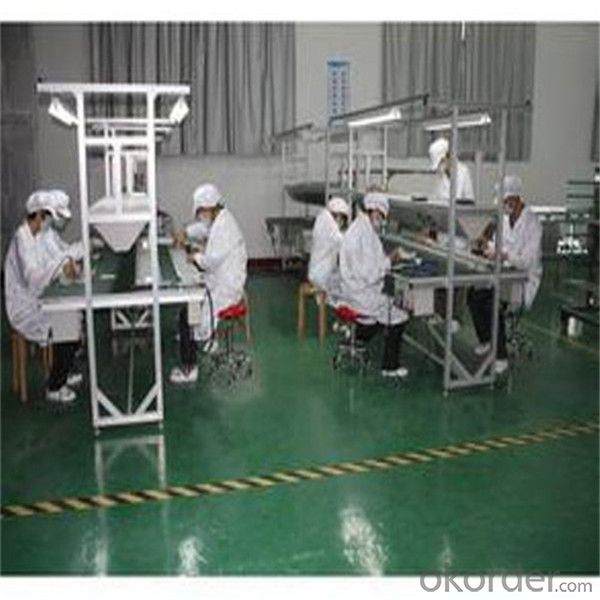
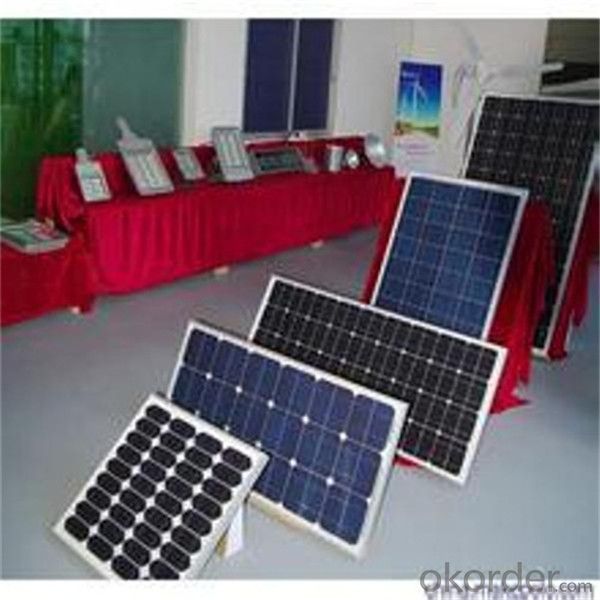
Business Type: Manufacturer
Main Products: Solar Panel , Solar Module , PV Panel , PV Module , Poly Crystalline Solar Panel , Poly Crystalline Solar Module
Number of Employees: 202
Year of Establishment: 2009-03-26
Management System Certification: ISO 9001
OEM/ODM Availability: Yes
- Q: I have two solar panels that were going to be trashed at work. I want to use them to charge batteries on my RV but i noticed they put out around 20 volts in direct sunlight. So i am wondering: -isn't this way too much voltage for a 2 volt system? -do a need some sort of a regulator connected to keep them from overcharging?
- 20 volts is a common open-circuit voltage for nominal 2v panels. The panels put out about 5v at full load. If the panel puts out little enough that it takes 20 hours or more to put a full charge in the battery you can get by without a charge controller - just keep the cells topped up with distilled water. A charge controller will do a more efficient job, though. The most efficient charge controllers use what's called Maximum Power Point Technology (MPPT) which lets the panels operate at their most efficient point throughout the battery's charging cycle. Available on OKorder. The charge controller should have the same or higher wattage as the panels it controls - if you're not sure of wattage, assume that they are the same as similar area panels you find for sale. Before buying a charge controller, connect the panels through an ammeter to a discharged battery. They may have been trashed because of damage and low output. You need at least an amp for trickle charge, 5 amps for reasonable recharge times.
- Q: Do solar panels require a backup generator?
- No, solar panels do not require a backup generator. They generate electricity from sunlight, so as long as there is sufficient sunlight, they can provide continuous power without the need for a backup generator.
- Q: Why are they placed there? How come they aren't placed on the floor or window.My fiance and I are interested in putting solar panels on our new home. I was really curious and google wasn't giving me the answer. My roof is pretty small in our new house and I don't think it would fit there. Why is it usually placed there and is there another place? You will be chosen as best answer if you answer all my questions. Thanks in advance, and I would appreciate if nobody is rude. Otherwise, I will have to report abuse.
- The roof receives the most direct sunlight, and the more direct the sunlight the more electricity is produced. I've never seen solar panels located elsewhere on a house, but I have seen some placed in a yard or field.
- Q: There are places in the US where it is sunny almost all the time, like the southwest. But if we covered an area of the Sahara with solar panels, the sun exposure with the area would generate enough energy for the whole US at least. Plus, I would imagine it would be a great source of income for those countries.Why isn't this a topic under discussion or even mentioned between countries' governments/in Congress/in politicians' viewpoints?
- It's expensive - solar power isn't competitive with power from the grid in most countries and it's a very expensive in terms of capital - you have to put most of the money up front. Meanwhile fossil fuel plants are cheaper to build and from then on you only spend money on fuel when you're selling power (and of course you don't have to pay for the damage you cause society with air pollution and greenhouse gases).
- Q: How can I know the right type of solar panel to choose for my small village house in Africa?
- The power output of a solar panel uses a formula to determine kilowatts produced per hour per square meter per day. This calculation is important because, if you plan to install a solar power system for your home, you will want to know how many solar panels will be needed. To calculate solar power requirements correctly, you need to gather the data that is needed for the calculation. First you have to find the average amount of solar radiation available for your area. You can use a solar radiation chart. This can range from a 4 to a 7 depending on the area you live in. Write the number down on a piece of paper and indicate it with the letters RA. Next is determine the amount of electricity that you use daily. Add the kilowatt-hours used per month from your utility bill. Multiply this number by ,000 to get the watt hours in a month. Divide the total by 30 for the amount of electricity you use daily. Write this number down and indicate it with the letters DE. Determine the percentage of your home that you want to power with the solar power system. Write this number down and indicate it with the letter P. Determine the system inefficiency factor for the solar power system. You should be able to find this on the brochure for the system or from the manufacturer's web site. Write this number down and indicate it by the letter I. Determine the power or yield that is required for your home. Use the equation P = I x (DE x P) / RA to find the power requirements in kWh. Divide the number from Step 5 by the peak wattage for a single solar panel to determine the number of panels you will need for your home. Goodluck! :)
- Q: How long does it take a 5 watt, 2 volt solar panel to charge a 2 volt R.V. battery?
- Most solar panels have something called a charge controller on them. This prevents electricity from going backwards from the battery to the panel. Solar panels are rated at 2V but they do put out a little more than that during full sun operation. You didn't specify the size of your battery but it really doesn't matter. It comes down to your consumption of power. If you are only charging the RV battery so it maintains a charge when you don't use it very much, a 5 watt panel is fine. It will charge the battery and keep the small drains on the battery from making it go dead ( the clock radio, the theft deterrent system, etc use power even when RV is off) But if you are using the battery to run things when you are parked, you probably don't have a big enough panel. If you use a 30watt fluorescent light and a 00 watt laptop, you need 30 watts of power saved up every hour in your battery and that's with no inefficiencies. So if your panel puts out 5 watts an hour and you are using 30 watts an hour, you need 30 watts/ 5 watts = 9 hours minimum of charge time to run your stuff for just one hour. You probably need a panel of around a 00 watts to get any meaningful use of your battery. Plus, you never want to run your battery to full drain because it ruins the plates inside the battery. Watts = volts x amps. If you have 2 volts panels, you would charge at 8 amps with a 00 watt panel. This is a good charge rate. Any more than this and you risk warping the plates with too much heat.
- Q: How do solar panels affect the property taxes?
- Solar panels can potentially affect property taxes, but the impact varies depending on the jurisdiction. In some areas, installing solar panels may increase the assessed value of a property, leading to higher property taxes. However, many states and municipalities offer tax incentives and exemptions that can offset any potential increase. It is advisable to consult with local tax authorities or a tax professional to understand the specific implications for a particular property.
- Q: Is it good? ( solar energy)
- It depends mainly on where you live - both politically and geographically. It's very worthwhile if you live in the Southern hemisphere and your house faces north. The same holds true if you live in the Northern hemisphere in a south-facing dwelling. If your government gives a generous rebate towards your purchase of the panels (as the Australian one does) then ,yes, it is worthwhile as you can make your money back in only a few years. Of course if your motivation is more an ecologic than economic one then go ahead and do it.
- Q: Can solar panels be used for powering agricultural equipment?
- Yes, solar panels can be used for powering agricultural equipment. Solar energy can be harnessed and converted into electricity through photovoltaic cells in solar panels. This electricity can then be used to power various agricultural equipment such as water pumps, irrigation systems, electric fences, and even machinery like tractors and harvesters. Solar-powered agricultural equipment offers a sustainable and cost-effective alternative to traditional fossil fuel-powered machinery, reducing both carbon emissions and operating costs for farmers.
Send your message to us
280w High Efficiency Poly Solar Panel from CNBM - Solar Panels Boulder
- Loading Port:
- Shanghai
- Payment Terms:
- TT OR LC
- Min Order Qty:
- 1000 watt
- Supply Capability:
- 100000 watt/month
OKorder Service Pledge
OKorder Financial Service
Similar products
Hot products
Hot Searches
Related keywords
